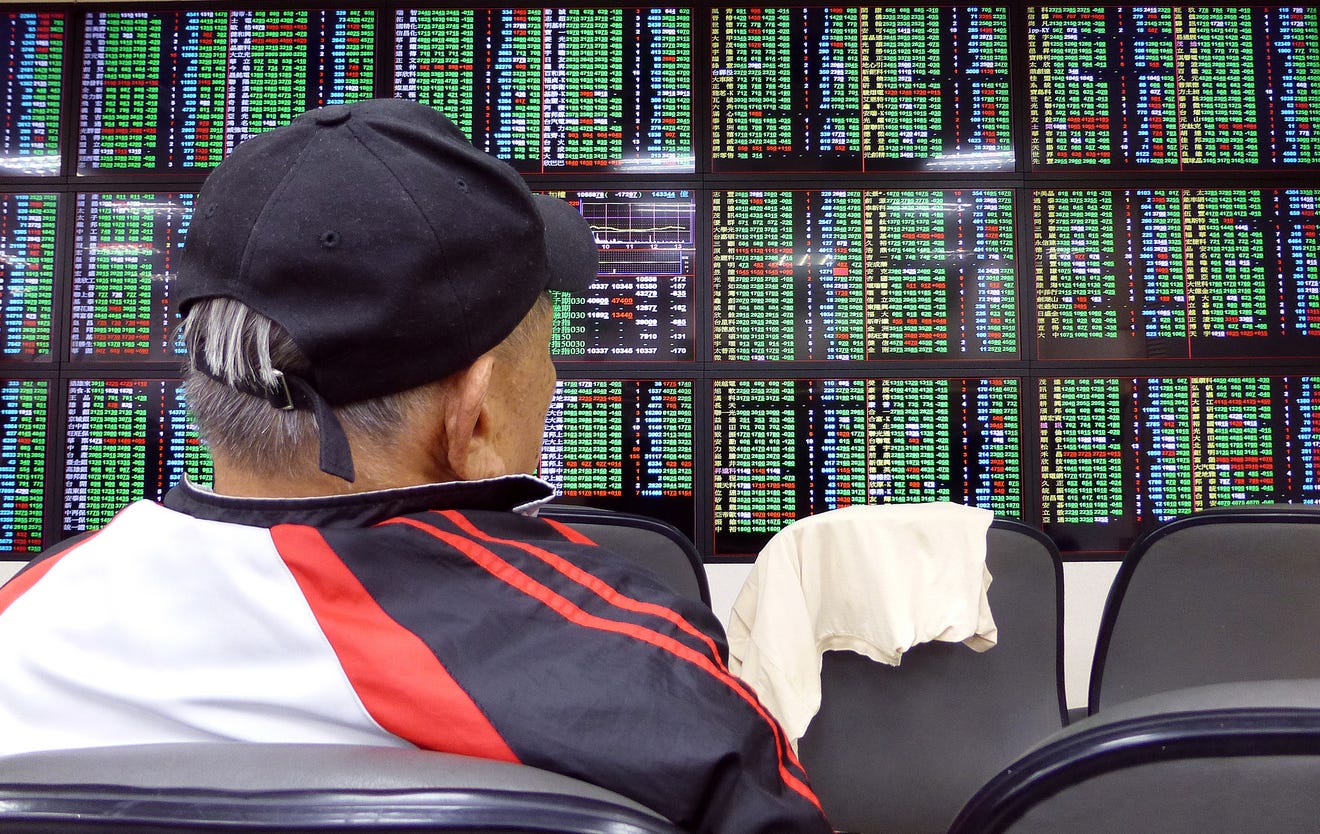Is The U.S. Dollar Headed For Its Worst Presidential First 100 Days Since Nixon?

Table of Contents
Historical Parallels to the Nixon Shock
The Context of 1971:
The early 1970s saw a U.S. economy grappling with significant challenges. High inflation, a weakening U.S. dollar, and growing trade deficits were straining the Bretton Woods system, the post-World War II international monetary system. This system pegged the value of other currencies to the U.S. dollar, which in turn was backed by gold. The pressure on the dollar became unsustainable, leading Nixon to close the gold window in August 1971, effectively ending the gold standard.
- High inflation rates: Double-digit inflation eroded purchasing power and fueled social unrest.
- Weakening U.S. dollar: The dollar's value was steadily declining against other major currencies.
- Growing trade deficits: The U.S. was importing more than it was exporting, putting further pressure on the dollar.
- International monetary system instability: The Bretton Woods system was crumbling under the strain of these economic imbalances.
Drawing parallels, today's economic landscape presents some unsettling similarities. While we aren't on a gold standard, the current inflationary pressures, geopolitical uncertainty, and potential policy shifts echo the volatile climate preceding Nixon's decision. However, it's crucial to note key differences, such as the globalized nature of today's financial markets and the greater reliance on floating exchange rates.
Current Economic Indicators Pointing to Potential Dollar Weakness
Inflation and Interest Rates:
Inflation remains a significant concern. The current inflation rate, while fluctuating, is still considerably higher than the Federal Reserve's target, forcing aggressive interest rate hikes. These hikes, while intended to curb inflation, also risk slowing economic growth and potentially weakening the dollar if they are too aggressive or prolonged.
- Current inflation rate and projections: Experts offer varying projections, but the uncertainty itself creates economic instability.
- Federal Reserve policy and future rate hikes: The Fed's actions will be crucial in determining the dollar's trajectory. Further significant hikes could strengthen the dollar in the short term, but also risk triggering a recession.
- Impact of inflation on consumer spending and business investment: High inflation erodes purchasing power and discourages investment, potentially impacting economic growth and the dollar's value.
Geopolitical Risks and Global Uncertainty:
Geopolitical risks, such as the ongoing war in Ukraine and escalating trade tensions between major economic powers, contribute to global uncertainty and significantly influence currency values.
- Impact of the war in Ukraine on energy prices and global supply chains: The war has disrupted energy markets and supply chains worldwide, fueling inflation and impacting economic growth.
- US-China trade relations and their impact on the dollar: Trade disputes between the US and China create uncertainty and can negatively affect global trade and the dollar's strength.
- Global economic slowdown and its effect on the dollar: A global economic slowdown could weaken demand for the dollar as a safe-haven asset.
Potential Policy Changes and their Effect on the Dollar:
Government policies, particularly fiscal and monetary policies, can have a profound impact on the dollar's value.
- Potential government spending increases or cuts: Significant changes in government spending can influence inflation and interest rates, affecting the dollar.
- Proposed tax policies and their effect on the economy: Tax policies can influence consumer spending, business investment, and overall economic growth.
- Potential deregulation or regulation measures: Regulatory changes in sectors like finance or energy can have significant ripple effects throughout the economy and the dollar's value.
Alternative Scenarios and Potential Outcomes
Best-Case Scenario:
In a best-case scenario, inflation gradually eases, the Federal Reserve manages interest rate hikes effectively, and geopolitical tensions subside. This could lead to a relatively stable dollar, albeit perhaps at a slightly weaker level than in the recent past.
Worst-Case Scenario:
A worst-case scenario could mirror or exceed the volatility of the Nixon shock. Uncontrolled inflation, aggressive interest rate hikes, escalating geopolitical risks, and poorly managed policy changes could trigger a significant dollar devaluation.
- Potential levels of dollar devaluation: The extent of the devaluation is impossible to predict, but it could significantly impact global markets.
- Impact on global markets and investment strategies: A sharp devaluation would create significant uncertainty in global markets, requiring significant adjustments to investment strategies.
- Effect on US consumers and businesses: A weaker dollar would increase import costs, potentially leading to higher prices for consumers and reduced competitiveness for businesses.
Conclusion
The historical parallels to the Nixon shock, coupled with current economic indicators and potential policy shifts, raise valid concerns about the U.S. dollar's stability. While a repeat of the Nixon shock is not guaranteed, the potential for significant turbulence during the first 100 days of the current administration is undeniable. The future of the U.S. dollar remains uncertain. Stay informed about the evolving economic situation and potential policy changes to understand if the U.S. dollar is truly headed for its worst presidential first 100 days since Nixon. Continue researching the U.S. dollar and its potential future trajectory for a comprehensive understanding. Follow reputable financial news sources for the latest updates on the U.S. dollar and the global economy.

Featured Posts
-
 How Trumps China Tariffs Led To Higher Prices And Potential Shortages In The Us
Apr 29, 2025
How Trumps China Tariffs Led To Higher Prices And Potential Shortages In The Us
Apr 29, 2025 -
 China Greenlights 10 New Nuclear Reactors Fueling Energy Growth
Apr 29, 2025
China Greenlights 10 New Nuclear Reactors Fueling Energy Growth
Apr 29, 2025 -
 Nyt Spelling Bee Solution March 15 2025
Apr 29, 2025
Nyt Spelling Bee Solution March 15 2025
Apr 29, 2025 -
 Oh What A Beautiful World Willie Nelsons Latest Album Details
Apr 29, 2025
Oh What A Beautiful World Willie Nelsons Latest Album Details
Apr 29, 2025 -
 Bmw And Porsche In China Market Difficulties And Industry Wide Implications
Apr 29, 2025
Bmw And Porsche In China Market Difficulties And Industry Wide Implications
Apr 29, 2025
Latest Posts
-
 Cardinal Beccius Unfair Trial Claim Bolstered By New Evidence
Apr 29, 2025
Cardinal Beccius Unfair Trial Claim Bolstered By New Evidence
Apr 29, 2025 -
 Reviving Nostalgia Older Viewers And Their You Tube Habits
Apr 29, 2025
Reviving Nostalgia Older Viewers And Their You Tube Habits
Apr 29, 2025 -
 How You Tube Is Attracting A Growing Audience Of Older Viewers
Apr 29, 2025
How You Tube Is Attracting A Growing Audience Of Older Viewers
Apr 29, 2025 -
 London Real Estate Fraud British Court Upholds Vaticans Claim
Apr 29, 2025
London Real Estate Fraud British Court Upholds Vaticans Claim
Apr 29, 2025 -
 Vatican Defrauded London Real Estate Deal Ruled Fraudulent By British Court
Apr 29, 2025
Vatican Defrauded London Real Estate Deal Ruled Fraudulent By British Court
Apr 29, 2025
